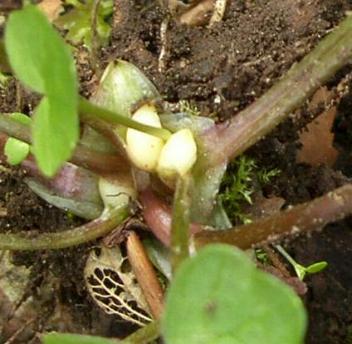A perennial which emerges in the spring from a knot of tubers and it can be a surprise if the gardener is new to the plot. In a woodland setting it can produce a pleasant carpet, but if it gets into a flowerbed it can can be prolific. It often arrives with a 'gifted' plant or one bought at a plant fair; care should also be taken if transferring soil. The shape of the tuberous root (see bottom picture) was the reason it was chosen to treat haemorrhoids by herbalists under the philosophy of the Doctrine of Signatures and given the alternative common name, Pilewort. However, it has astringent properties and is still used for this ailment and is prepared as a decoction of the leaves or root for application as a hot compress or formulated in an ointment. All parts of the plant contain toxins which become more potent as the flowers and fruit appear. Young leaves have been boiled like spinach or eaten in a salad, and the flower buds substituted for capers, but the protoanemonin toxins they contain are very irritant so consumption is not advised. The dark green, shiny, heart-shaped leaves are sometimes mottled with light or dark markings. They have a weak stem and lie flat on the ground unless held up by surrounding plants. Their dense cover can sometimes obliterate other spring flowers. The leaves and flowers die back completely in late spring. As they do so the roots swell into tubers - these have been roasted and eaten, the cooking process may reduce the potency of the toxins. Digging the area can break up the tubers making the problem worse. Dig carefully with a hand fork and try to remove all of the tubers - each bulbous fragment can create a new plant. If possible only dig an infested patch as the leaves are emerging in early spring. The following spring either try to remove any missed plants, or treat with a systemic weedkiller. Clean soil off any tools used in the area, as even the tiniest tuber will produce a new plant. Also do not move any plants from the area without removing all of the soil from the roots first. The annual Tagetes minuta (Muster-John-Henry) is said to inhibit growth due to an allelopathic effect of the roots, so a planting may help to clear out an infestation of Celandine. A dressing of wood or coal ash is said to remove an infestation of Lesser Celandine. Nicholas Culpepper Follow these links for further details on Weeds, Weed Removal and Weed Prevention. |
 White bulbils in the leaf axil. A bunch of tuberous roots. |